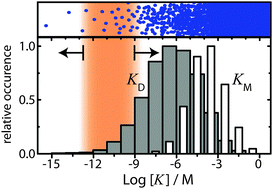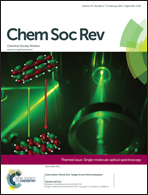Breaking the concentration limit of optical single-molecule detection
Abstract
Over the last decade, single-molecule detection has been successfully utilized in the life sciences and materials science. Yet, single-molecule measurements only yield meaningful results when working in a suitable, narrow concentration range. On the one hand, diffraction limits the minimal size of the observation volume in optical single-molecule measurements and consequently a sample must be adequately diluted so that only one molecule resides within the observation volume. On the other hand, at ultra-low concentrations relevant for sensing, the detection volume has to be increased in order to detect molecules in a reasonable timespan. This in turn results in the loss of an optimal signal-to-noise ratio necessary for single-molecule detection. This review discusses the requirements for effective single-molecule fluorescence applications, reflects on the motivation for the extension of the dynamic concentration range of single-molecule measurements and reviews various approaches that have been introduced recently to solve these issues. For the high-concentration limit, we identify four promising strategies including molecular confinement, optical observation volume reduction, temporal separation of signals and well-conceived experimental designs that specifically circumvent the high concentration limit. The low concentration limit is addressed by increasing the measurement speed, parallelization, signal amplification and preconcentration. The further development of these ideas will expand our possibilities to interrogate research questions with the clarity and precision provided only by the single-molecule approach.

- This article is part of the themed collection: Single-molecule optical spectroscopy

 Please wait while we load your content...
Please wait while we load your content...